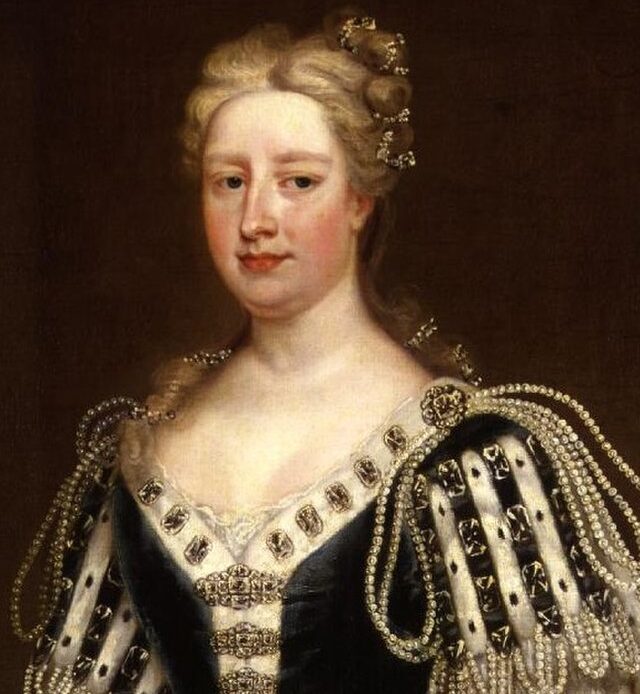
Caroline of Ansbach was Princess of Wales from 1714 to 1727; her father-in-law, King George I, inherited the throne upon Queen Anne’s death and began the Hanoverian dynasty. She remains one of the most interesting women to hold the title of Princess of Wales and left her mark on British society and the monarchy itself.
Caroline spent much of her teenage years at the Prussian court after both of her parents died in her youth. King Frederik I and Queen Charlotte of Prussia prized intelligence at their court, and invited many mathematicians, theologians, philosophers, historians, and scientists to visit and stay. Caroline was introduced to a number of notable figures who would influence her own interests, including the German philosopher Gottfried Leibnitz.
Caroline was chosen as a bride for Prince George Augustus of Hanover and they married in 1705. They started their family and began their married life in Hanover.
Their position changed in 1714 when Queen Anne died and King George I inherited the British throne. George had divorced his wife, Sophia Dorothea of Celle, in the 1690s after she had an affair, meaning that he did not have a consort. While he did bring his mistresses with him, he could not have them fill all roles of a consort, And so Caroline was able to stand-in when needed for official state functions as the highest-ranking women at the new king’s court.
Both Caroline and her husband worked hard to learn English traditions and customs in addition to the language, making them more popular than the older king who spoke German.
Caroline also quickly grew her own court as Princess of Wales and focused on inviting intellectuals. She continued her correspondence with many academics, including Leibnitz. Caroline is now known as an Enlightenment Princess, and it is clear why- she invited many Enlightenment figures to England and encouraged those around her to do the same.
Notably, she was a patron to George Frederic Handel, the German composer who would go on to compose the coronation anthem “Zadok the Priest”. The Princess also served as patron to many artists, and commissioned busts and paintings of previous English and British monarchs. Many of these pieces are still in the Royal Collection today.
Caroline became queen in 1727 when her husband ascended the throne as King George II.

